Salvadoran Americans
Salvadoran Americans (Spanish: salvadoreño-estadounidenses, salvadoreño-americanos, norteamericanos de origen salvadoreño or estadounidenses de origen salvadoreño) are Americans of full or partial Salvadoran descent. As of 2010, there are 2,195,477 Salvadoran Americans in the United States, the fourth-largest Hispanic community by nation of ancestry.[2] According to the Census Bureau, in 2016 Salvadorans made up 3.8% of the total Hispanic population in the US.[3]
| Total population | |
|---|---|
| 2,306,774 (2018 American Community Survey)[1] 0.71% of the U.S. population (2018) | |
| Regions with significant populations | |
| Greater Los Angeles, San Francisco Bay Area, Maryland, Washington, D.C., Houston, Dallas, New York City, Long Island, New Jersey, Greater Boston, Miami, Northern Virginia, Chicago, Atlanta, Charlotte, Las Vegas, Northwest Arkansas, San Diego | |
| Languages | |
| Lencan languages, Mayan languages, Pipil, Cacaopera, Spanish, English | |
| Religion | |
| Christianity (mostly Catholic, significantly Protestant) |
| Hispanic and Latino Americans |
|---|
|
National origin groups
|
|
Political movements
|
|
Organizations
|
|
Ethnic groups |
|
Lists
|
Salvadorans are the largest group of Central Americans of the Central American Isthmus community in the U.S. Among the Hispanic groups, Salvadorans are also the largest group of Spanish speakers in the United States who use voseo.
The largest Salvadoran population is in Central parts of Los Angeles and throughout California (i.e. the Coachella Valley/Palm Springs) along with Guatemalan Americans, Hondurans and Nicaraguans.[4] See: Salvadoran diaspora in Los Angeles)
Demonym
Salvadoran is the accepted and most commonly used term for referring people of Salvadoran ancestry. However, both Salvadorian and Salvadorean are widely used terms in daily life by English-speaking Salvadoran citizens living in the U.S and other English-speaking countries. Both words can be seen in most Salvadoran business signs in the U.S and else where in the world. This is because the sounds "ia" and "ea" in Salvadorian and Salvadorean sound more closely to the "ñ" sound in the Spanish term Salvadoreño.
History
.jpg)
The first Salvadorans that came to the United States before the El Salvador Civil War (1979–1992) began arriving mostly to San Francisco, where they worked as shipyard employees in the early twentieth century.[5] Salvadorans that came during this period were mostly economic migrants, as El Salvador was affected by economic turmoil during the Great Depression and slow growth after World War II ended. In the 1960s and early 1970s, most of the immigrants were women; they found work as housekeepers or in childcare.[6]
Increased migration (1980s-)
While Salvadoran migration to the U.S. remained low throughout the first several decades in the 20th century, it spiked at the onset of the Salvadoran Civil War, where many fled to the United States seeking sanctuary from the devastation that plagued the country. Some scholars have argued that the economic devastation wrought by the conflict is a greater factor in migration than political violence.[7] At least half of the refugees—between 500,000 and one million—immigrated to the United States, which was home to less than 10,000 Salvadorans before 1960.[8]
The proximate causes of migration have been studied by analyzing spatial origins. One method is to compare maps of political violence with maps of the origins of Salvadoran migrants, though this type of aggregate analysis could not state with certainty the motivation of any individual migrant.[7] According to William Stanley, this massive migration to the U.S. was a result of political violence as much as it was the deteriorating economic conditions in El Salvador, but this is disputed by other scholars.[9][7] Stanley wrote that political violence was an "important and probably the dominant motivation" driving Salvadoran migration to the US, but in 1990 Richard Jones argued that "...this statement is too strong. It implies that migrants to the United States were directly uprooted from their places of origin by political violence. However, other scenarios are possible. The migrants may have been persons from nonconflictual zones who were forced to emigrate when refugees from elsewhere in the country displaced them or because of general economic deterioration."[7]
Organizations including the ACLU, the U.S. Committee for Refugees and various church groups have argued that the cause of migration is political violence and persecution, but the US State Department and Justice department believe it is the deteriorating economic conditions. The strict standard applied to petitions for asylum has reflected the view that asylum seekers must show a "clear probability of persecution" and over 95 percent of asylum applications were rejected by the INS until May 1987 when the US offered an extended voluntary departure to all Salvadorans who had entered the country illegally since 1982.[7]
Many Salvadoran refugees came to the city of Los Angeles, which today holds the largest population of Salvadorans in the country. A large population of Salvadorans also arrived in Washington D.C.; which by 1989, an estimated 150,000 Salvadorans resided in the nation's capital.[10] Many Salvadorans came to the United States undocumented and applied for asylum and/or work permits in order to legalize their status.
In comparison to their rural, working class, and often undocumented counterparts migrating to Los Angeles, Washington D.C. and Houston; wealthy Salvadorans also found refuge in the U.S., migrating to Coral Gables and Key Biscayne in Miami.[11] They numbered over 1,000 individuals and many of them are temporary exiles, who planned to go back after the end of the war. By the end of 1989, more than 250,000 Salvadorans migrated to the U.S. Unofficially, there were one million Salvadorans that came to the U.S.[12]
The migration of Salvadorans was a result of both economic and political problems. The largest immigration wave occurred as a result of the Salvadoran Civil War in the 1980s, in which 20%–30% of El Salvador's population emigrated. About 50% percent, or up to 500,000 of those who escaped the country headed to the U.S., which was already home to over 10,000 Salvadorans, making Salvadorans Americans the third-largest Hispanic and Latino American group, after the Mexican American majority and Cubans (when not including Stateside Puerto Ricans). Salvadorans however are predicted to replace Cubans as the largest population by the next census.
The number of Salvadoran immigrants in the United States continued to grow in the 1990s and 2000s as a result of family reunification and new arrivals fleeing a series of natural disasters that affected El Salvador, including earthquakes and hurricanes. Gang warfare, which made El Salvador one of the dangerous countries in the world, also contributed to the surge of immigrants seeking asylum in the late part of the 2000s and the first four years in the 2010s.[13] By 2008, there were about 1.1 million Salvadoran immigrants in the United States. Salvadorans are the country's fifth largest immigrant group after Mexican, Filipino, Indian, and Chinese foreign born.
| Years | # of Salvadorans entering the U.S. |
|---|---|
| 1931–1940 | 673 |
| 1941–1950 | 5,132 |
| 1951–1960 | 5,895 |
| 1961–1970 | 14,992 |
| 1971–1980 | 34,436 |
| 1981–1990 | 213,539 |
| 1991–2000 | 215,798 |
Language
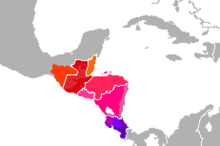
In the U.S., Salvadorans speak both English and Spanish, but their use varies. Recent immigrants and older generations tend to speak Spanish exclusively, while the newer generations (descendants of immigrants) learn Spanish as a first language only to become fluent in English when they start school. According to the American Community Survey of 2004, 5.2 percent of Salvadorans only speak English at home, the lowest compared to other immigrant populations. The percentage of “non-English at home, English spoken “very well” is at 36.2, the third lowest after the Guatemalans and the Hondurans.
Salvadoran Spanish is one of the most common dialects of Spanish spoken in the United States. Salvadorans speak Spanish that makes use of the medieval voseo pronoun equivalent to thou, making them the largest voseo Spanish speakers in the country. In Washington D.C., Salvadoran Spanish is the most common dialect of Spanish spoken, while in Los Angeles, Salvadoran Spanish is the second-most common Spanish dialect, after Mexican Spanish. Salvadoran Spanish consists of many Native American/Indigenous words from the Lenca and Pipil language that survived the European conquest and rule of El Salvador.
In the study, Voseo To Tuteo Accommodation Among Two Salvadoran Communities in the United States by Travis Doug Sorenson, Sorenson compared two Salvadoran communities, Houston and Washington D.C., on the way they maintain the use of voseo in the U.S. where the tuteo form is most widely spoken.[15] His research found that while Salvadorans are the majority of the Hispanic population in Washington D.C., they use the voseo form as much as their counterparts in Houston; a city with a large Mexican population that used the tuteo form instead. The hypothesis that Salvadorans participants in Washington would significantly retain more voseo than their compatriots in Houston was wrong.[15]
Religious affiliation
Reflecting the country's namesake, most Salvadorans are Christian. Traditionally, Salvadorans are Roman Catholics, but since the civil war, there has been a notable increase of Evangelicals or other Protestant denominations in the country. There is also a small but vibrant Jewish community, and most of its members are business owners.[16][17] Some Salvadoran Americans converted to Mormonism or Jehovah Witness. Younger generations of Salvadoran Americans are less likely to practice any type of religion than their parents.
During the civil war, some members of El Salvador's small, but vibrant Jewish community immigrated to the United States,[18] mostly settling in the Miami and Los Angeles areas.
Demographics
Areas of concentration

Many Salvadoran Americans reside in the Greater Los Angeles area, including Orange County, California and the Inland Empire; San Diego; and the Washington Metropolitan Area: Washington, D.C., Maryland and Northern Virginia. The Washington DC area is currently the only metropolitan area in the country where Salvadorans are the majority among Hispanics, and they are most concentrated in the suburbs in Northern Virginia and Maryland. In Washington D.C. proper, 32 percent of the Hispanic population are Salvadorans, the largest in the city. Salvadorans settled in the neighborhoods of Mount Pleasant, Adams Morgan, and Columbia Heights.[19] In the Richmond Metro Region, Salvadoran Americans form the largest single group of Hispanics in the Metro, but not the majority.[20] Most of these Salvadorans came from the eastern departments of San Miguel and La Union,[21] especially from the Salvadoran towns Chirilagua and Intipuca.[22][23] Formerly known as Arlandria, a neighborhood between Alexandria and Arlington in Virginia is now referred to as Chirilagua, due to the many Salvadorans living there from that particular town.[24] Salvadorans are the largest immigrant population in the Washington D.C. metropolitan area.[25]
There is also a large number of Salvadorans in Texas, especially in Houston, Austin, Dallas and Fort Worth, Texas; increasingly New Orleans after Hurricane Katrina in 2005; and in other California regions outside of Los Angeles such as the San Francisco Bay Area. In addition, there is a significant number of Salvadoran Americans in the New York City area such as Northern New Jersey; Flushing, Queens; Corona, Queens; Far Rockaway, Queens; Parkchester, Bronx; South Bronx; Williamsburg, Brooklyn and Long Island. In Massachusetts, Salvadorans tend to reside in Greater Boston, mostly in cities such as Chelsea, Somerville, Everett, Revere, or Boston. Salvadorans have also established a significant community in the island of Nantucket (where Salvadorans account for 7.3% of the total population there as of 2010),of which a sizable majority come from the municipality of Agua Caliente, El Salvador.[26][27]
Smaller, but sizable populations of Salvadorans can be found in Miami-Dade or South Florida as well in Central Florida; Georgia; and North Carolina.
Recent census data shows that for the first time, there are more Salvadorans living on Long Island than Puerto Ricans, with Salvadorans now numbering nearly 100,000,[28] representing nearly a quarter of all Hispanics in the region, making them largest Latino group in Long Island. They tend to concentrate in the hamlets of Brentwood, Central Islip, North Bay Shore, Uniondale, and the village of Hempstead.[29]
States
| State | Salvadoran Population (2010 Census)[30] | Percent |
|---|---|---|
| 2,419 | 0.1% | |
| 938 | 0.1% | |
| 12,225 | 0.2% | |
| 14,980 | 0.5% | |
| 573,956 | 1.5% | |
| 12,329 | 0.2% | |
| 6,223 | 0.2% | |
| 1,231 | 0.1% | |
| 16,611 | 2.8% | |
| 55,144 | 0.3% | |
| 32,107 | 0.3% | |
| 801 | 0.1% | |
| 1,159 | 0.1% | |
| 14,217 | 0.1% | |
| 7,401 | 0.1% | |
| 5,601 | 0.2% | |
| 5,108 | 0.2% | |
| 2,351 | 0.1% | |
| 5,120 | 0.1% | |
| 618 | 0.0% | |
| 123,789 | 2.1% | |
| 43,400 | 0.7% | |
| 3,401 | 0.0% | |
| 7,175 | 0.1% | |
| 1,174 | 0.0% | |
| 4,628 | 0.1% | |
| 140 | 0.0% | |
| 6,016 | 0.3% | |
| 30,043 | 1.1% | |
| 823 | 0.1% | |
| 56,532 | 0.6% | |
| 2,051 | 0.1% | |
| 152,130 | 0.8% | |
| 37,778 | 0.4% | |
| 73 | 0.0% | |
| 5,627 | 0.0% | |
| 2,788 | 0.1% | |
| 5,906 | 0.2% | |
| 7,952 | 0.1% | |
| 2,715 | 0.3% | |
| 3,830 | 0.1% | |
| 780 | 0.1% | |
| 8,570 | 0.1% | |
| 222,599 | 0.9% | |
| 8,998 | 0.3% | |
| 116 | 0.0% | |
| 123,800 | 1.5% | |
| 12,637 | 0.2% | |
| 893 | 0.0% | |
| 1,867 | 0.0% | |
| 198 | 0.0% | |
| Total US Salvadoran Population | 1,648,968 | 0.5% |
Metropolitan areas
The largest Salvadoran populations are found within these areas (Source: Census 2010)
- Los Angeles-Long Beach-Santa Ana, CA MSA – 381,519 (3.0%)
- Washington-Arlington-Alexandria, DC-VA-MD-WV MSA – 228,045 (4.1%)
- New York-Northern New Jersey-Long Island, NY-NJ-PA MSA – 199,510 (1.1%)
- Houston-Sugar Land-Baytown, TX MSA – 140,928 (2.4%)
- San Francisco-Oakland-Fremont, CA MSA – 77,149 (1.8%)
- Dallas-Fort Worth-Arlington, TX MSA – 59,383 (0.9%)
- Riverside-San Bernardino-Ontario, CA MSA – 42,672 (1.0%)
- Boston-Cambridge-Quincy, MA-NH MSA – 36,929 (0.8%)
- Miami-Fort Lauderdale-Pompano Beach, FL MSA – 33,033 (0.6%)
- Las Vegas-Paradise, NV MSA – 24,542 (1.3%)
- Atlanta-Sandy Springs-Marietta, GA MSA – 24,439 (0.5%)
- Baltimore-Towson, MD MSA – 17,980 (0.7%)
- Chicago-Joliet-Naperville, IL-IN-WI MSA – 13,700 (0.1%)
- San Jose-Sunnyvale-Santa Clara, CA MSA – 12,085 (0.7%)
- Charlotte-Gastonia-Rock Hill, NC-SC MSA – 12,080 (0.7%)
- Phoenix-Mesa-Glendale, AZ MSA – 9,840 (0.2%)
- Fayetteville-Springdale-Rogers, AR-MO MSA – 8,865 (1.9%)
- Sacramento--Arden-Arcade--Roseville, CA MSA – 8,701 (0.4%)
- Bakersfield-Delano, CA MSA – 8,485 (1.0%)
- Richmond, VA MSA – 8,238 (0.7%)
US communities with largest population of people of Salvadoran ancestry
The top 25 US communities with the highest populations of Salvadorans were (Source: Census 2010[31])
- Los Angeles, California – 228,990
- Houston, Texas – 75,907
- New York, New York – 38,559
- Washington, D.C. – 16,611
- San Francisco, California – 16,165
- Brentwood, New York – 15,946
- Dallas, Texas – 15,696
- Irving, Texas – 12,544
- Boston, Massachusetts – 10,850
- Hempstead, New York – 10,707
- Charlotte, North Carolina – 9,516
- Palmdale, California – 9,488
- Wheaton, Maryland – 8,912
- Las Vegas, Nevada – 8,392
- Elizabeth, New Jersey – 7,364
- Chillum, Maryland – 7,315
- Oakland, California – 7,246
- Silver Spring, Maryland – 7,103
- Arlington County, Virginia – 7,088
- Dale City, Virginia – 7,036
- San Jose, California – 6,829
- Long Beach, California – 6,657
- Alexandria, Virginia – 6,436
- Chelsea, Massachusetts – 6,391
- Santa Ana, California – 6,389
US communities with high percentages of people of Salvadoran ancestry
Top US communities with the highest Salvadoran ancestry in 2010:
- Islandia, Florida 44.4%
- Brentwood, New York 26.3%
- New Cassel, New York 24.7%
- Colmar Manor, Maryland 24.7%
- North Bay Shore, New York 23.9%
- Langley Park, Maryland 22.5%
- Edmonston, Maryland 22.0%
- Brentwood, Maryland 22.0%
- Mendota, California 21.9%
- Chillum, Maryland 21.8%
- Uniondale, New York 20.2%
- Hempstead, New York 19.9%
- North Brentwood, Maryland 19.1%
- Adelphi, Maryland 19.1%
- Landover Hills, Maryland 19.1%
- Central Islip, New York 18.5%
- Wheaton, Maryland 18.5%
- Cottage City, Maryland 18.3%
- Woodlawn, Maryland 18.3%
- Chelsea, Massachusetts 18.2%
- Woodlawn, Virginia 17.9%
- Marumsco, Virginia 17.9%
- Roosevelt, New York 17.8%
- Loch Lomond, Virginia 17.6%
- Hyattsville, Maryland 16.4%
- Sudley, Virginia 16.4%
- Yorkshire, Virginia 16.3%
- Huntington Station, New York 15.8%
- Inwood, New York 15.6%
- Herndon, Virginia 15.5%
- East Riverdale, Maryland 15.2%
- Mount Rainier, Maryland 14.4%
- Sterling, Virginia 14.0%
- Monon, Indiana 14.0%
- El Jebel, Colorado 13.8%
U.S. communities with the most residents born in El Salvador
Top 25 U.S. communities with the most residents born in El Salvador are:[32]
- Langley Park, MD 25.2%
- Seven Corners, VA 18.0%
- New Cassel, NY 15.5%
- Mendota, CA 13.8%
- Brentwood, NY 12.9%
- Hempstead, NY 12.3%
- Bailey's Crossroads, VA 12.2%
- Adelphi, MD 11.3%
- North Bay Shore, NY 10.6%
- Herndon, VA 10.3%
- Edmonston, MD 9.6%
- Chelsea, MA 8.8%
- Wheaton-Glenmont, MD 8.7%
- Chillum, MD 8.2%
- Silver Spring, MD 7.9%
- West New York, NJ 7.8%
- Uniondale, NY 7.8%
- Jefferson, VA 7.5%
- El Jebel, CO 7.5%
- Colma, CA 7.5%
- Mount Rainier, MD 7.3%
- Huntington Station, NY 7.2%
- Cottage City, MD 7.2%
- West Gate, VA 7.2%
- Freeport, NY 7.2%
Race and ethnicity
.jpg)
Most of the Salvadoran population that came to the United States is of Mestizo ancestry, a mixture of European and Native American/indigenous ancestry.

Mestizo and White Caucasian Salvadorans have ancestry from Spain, Italy, France, Portugal, Germany, England, and Ireland. The majority of Salvadorans who have Mestizo or indigenous roots can trace their indigenous ancestry to the Lencas and Pipil people.
Salvadorans also have Arab ancestries that include Lebanon, Syria, Iran and Palestine. There is a significant number of Jewish Salvadoran families in the country, as well as a population of tri-racial Pardo Salvadorans who have African roots in addition to their indigenous and European ancestries.
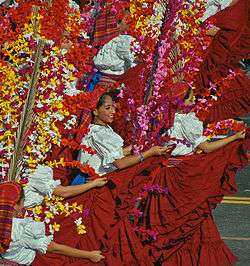
Socioeconomics and culture
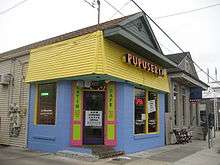
According to the 2004 ACS, only 40 percent of all Salvadoran and Salvadoran American residents in the U.S. have a high school diploma, the lowest among all other Hispanic groups.[34] Only 10 percent of Salvadorans possess a bachelor's degree, also the lowest among Latino Americans. Nonetheless, 15 percent of Salvadorans lives under poverty (among the lowest) and the average income of Salvadorans is $40,000.[35] In the Washington metropolitan area, Salvadorans who came to the area during the 1980s working in construction or the service sector are becoming business owners.[36] These small business owners, numbering 4,000, usually tend to be in the construction, restaurant and cleaning industries. The Salvadoran-American Chamber of Commerce of the Washington, D.C. Metropolitan Area was created to help Salvadorans business owners with " financial consultations, legal services, general business and government information, and technical assistance."[37] In Los Angeles, near the intersection of Pico Boulevard and Vermont Avenue,[38] The El Salvador Community Corridor was created among other things, to help boost the economic livelihood and community pride within the large Salvadoran population.[39] Asylum laws prohibit many Salvadorans from renewing their ties to their home culture. Most asylum seekers cannot visit El Salvador, even for a loved one's funeral, without losing their legal status in the United States. Thus, many the U.S.' Salvadorans are torn between embracing the culture of the United States and maintaining their Salvadoran identities.
U.S.-Salvadorans form an insular community—with their own social clubs, doctors, even banks—and often have little contact with outsiders. They maintain a tight network, living almost exclusively with other people from their home country, or even their hometown.[40][41] Many older immigrants have spent more than ten years in the United States without learning any English.
Although they immigrated largely out of fear rather than a desire for a new life, Salvadorans in the United States, especially the younger generations, are gradually becoming Anglicized. The U.S.-born children of Salvadoran refugees or immigrants are becoming more aware of their Salvadoran roots, even at the behest of their Salvadoran born parents.[42] This is especially true during the 2009 Salvadoran presidential elections where the leftist party, FMLN had its best chance to win for the first time. These Salvadoran Americans, raised and taught in the U.S., understand the problems in El Salvador is facing and become more proactive on ways to address these issue. While conditions have improved in El Salvador, few refugees have returned home. The United States—once a place of refuge—has become a new home for Salvadoran immigrants.[43] To reflect the changing needs of the United States Salvadoran community, the Central American Refugee Center in Los Angeles (CARECEN), one of the largest support organizations for refugees, changed its name to the Central America Resource Center.[44]
In areas with large Salvadoran populations, festivals celebrating their culture abounds. In Los Angeles, three different Salvadoran events were celebrated in the month of August alone.[45] In Wheaton, Maryland,[46] Gaithersburg, Maryland, and Prince William County, Virginia,[47] were sites of the annual Salvadoran-American Festival. Pupusas, El Salvador's national dish, have become the best and most known representation of Salvadoran culture in the mainstream United States. In some pupuserias in Maryland, they Americanized the pupusa; by using crab meat or creating a cheeseburger-style pupusa instead of the normal ingredients used (cheese and pork).[48] The State of New York passed a resolution recognizing August 6 as Day of the Salvadoran American (Día del Salvadoreño-Americano).[49] Similarly, in Maryland, governor Martin O’Malley declared August 5 as the Day of the Salvadoran American.[50][51]
Social issues
Many cultural observers contend that mainstream United States has not yet formed a distinct stereotype of US-Salvadorans, though because most of the concerns and affairs of Salvadorans in the U.S media point out and focuses generally in the U.S's Proxy war showdown and involvement in the Salvadoran Civil War legacy.
Salvadorans have settled in neighborhoods already populated by other Latin Americans, and outsiders generally have only a vague sense of the various Latino nationalities in those neighborhoods.
US-Salvadorans have sometimes had tense relations with their neighbors in the cities where they are concentrated. Salvadoran gangs have fought with Mexican gangs in Los Angeles, and in Washington, D.C., a city with a significant Salvadoran population, they have competed with African Americans for jobs and resources.
Political participation
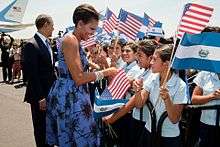
Politically, Salvadorans are more involved in local and state governments than the federal government. Wendy Carrillo is serving in the California State Assembly. A Democrat, she represents the 51st State Assembly district, encompassing parts of northeastern Los Angeles and East Los Angeles.[52] She was sworn into office by Assembly Speaker Anthony Rendon on December 16, 2017.[53] Prior to becoming a member of the California State Assembly, she was a multimedia journalist and labor activist. The Washington DC Metro Area has some Salvadoran American politicians representing the voice of the second largest Salvadoran community that lives there. Elected to the county board of the smallest self-governing county in the US with the 3rd highest income, Walter Tejada is one of five members that govern Arlington County, VA; becoming the chairman of the Arlington County Board in 2013.[54] Delegate Ana Sol Gutierrez represents the 18th District of Montgomery County, MD, the 10th highest income county in the US. Delegate Victor R. Ramirez represents the 47th District of Prince George's County, MD, the wealthiest African American-majority county in the US. Ramirez became the first Latino to serve in the Maryland State Senate in 2011. A partner of Ramirez is Prince George's County Council member William A. Campos.
In Long Island, Salvadorans have been seeking political power in towns or county boards.[55] Monica Martinez was elected to the Suffolk County 9th legislative District in 2013.[56] Her brother Antonio Martinez, was the first Salvadoran elected to any office in Long Island; is a Councilman in the town of Babylon, New York.[57] Jorge Guadron and Miriam Ventura became the first Salvadoran Americans elected to the New York State Democratic Committee for the 6th Assembly District in September, 2014. http://www.elsalvador.com/articulo/salvadorenos-por-el-mundo/dos-salvadorenos-integran-comite-democrata-del-estado-nueva-york-63922
Salvadorans do not have nearly as much influence with the political establishment as voting constituencies have. In Los Angeles, for instance, there is a stark contrast between the U.S.-born Chicano neighborhoods of East L.A. and the Pico-Union and Westlake neighborhoods, populated by immigrant Mexicans and Central Americans. The former have many community centers, legal services, and social workers; the latter have very few.[58] This situation is slowly changing, however: Carlos Vaquerano, the Salvadoran community affairs director of CARECEN, was named to the board of Rebuild L.A., organized to help the city recover from the L.A. riots in 1992.[59] Jorge Guadron and Miriam Ventura are the first Salvadoran Americans elected to the New York State Democratic Committee for the 6th Assembly District in Long Island. http://www.elsalvador.com/articulo/salvadorenos-por-el-mundo/dos-salvadorenos-integran-comite-democrata-del-estado-nueva-york-63922
One area of U.S. politics in which Salvadoran Americans have played an important role is in legislation regarding their immigration status. In the debate leading to the passage of Temporary Protected Status for Salvadoran refugees and the extensions of that status, Salvadoran organizations lobbied politicians and brought their cases of persecution to the press. At first, refugee organizations were run by Americans, and Salvadorans often appeared in public only with bandannas over their faces. Gradually, Salvadorans and other Central Americans began to take charge of the refugee organizations and assume a higher public profile.
Salvadoran Americans have also contributed significantly to labor union activity. Many refugees fought for the right to organize under repressive conditions in El Salvador, and they brought dedication, even militancy, to American unions. In a 1990 Los Angeles janitors' strike, for instance, Salvadoran union members continued to march and demonstrate even under the threat of police violence. And Salvadoran street vendors in Los Angeles have organized to improve their precarious situation.[60]
Salvadoran Americans relations with El Salvador



Most Salvadoran Americans are not active in or outspoken about Salvadoran politics. Those U.S. organizations most actively involved in Salvadoran politics (such as the Committee in Solidarity with the People of El Salvador, CISPES) have attracted little participation by Salvadoran Americans themselves. The immigrants' own organizations have focused not on politics at home, but on relief and jobs in immigrant communities throughout the United States. This relative indifference to home politics may be surprising, given the political passions that have long raged in El Salvador; but the majority of Salvadoran Americans seem interested in putting the hatred of the past behind them.
While the most ideologically committed of the Salvadoran refugees settled in Panama, Nicaragua, Costa Rica, Australia, or Canada, those who settled in the United States focused on survival and building a community. Refugees who fled the government and refugees who fled the guerrillas have a lot in common; many will not even discuss their political beliefs, lest it disrupt the fragile solidarity of the refugee community. Furthermore, many Salvadorans on the left became active in politics because of the desperate poverty and class war in El Salvador; when they arrived in the United States, where it seemed for the first time possible to escape poverty through hard work, their political commitment sometimes melted away.
Salvadorans outside El Salvador are not permitted to cast absentee ballots in that country's elections. The majority of the refugee community is thought to favor the left, and the absence of their votes is believed to have helped the right-wing party ARENA win the Salvadoran presidency in 1989 and 1994.[61]
The relative lack of political influence among Salvadoran Americans is not necessarily permanent. Salvadoran immigrants are densely concentrated in a few cities, and they have a strong infrastructure in refugee organizations. As more Salvadorans become U.S. citizens, the immigrant community will probably play a larger role in local and regional politics. And given their economic contribution, they will almost certainly come to exert more influence in El Salvador.
El Salvador and United States relations


The history of U.S.-El Salvador relations encompasses some controversial moves and operations by the United States, e.g. the U.S.-involvement in the Salvadoran Civil War[62] and interference in Salvadoran elections such as during the 2004 presidential election.[63]
President Obama and President Funes announced the U.S.-El Salvador Partnership for Growth during President Obama's March 2011 visit to El Salvador. El Salvador is one of four countries—-along with the Philippines, Ghana, and Tanzania—-with which the United States is undertaking this partnership. The Partnership began with an analysis by economic experts from both countries, which identified the two key binding constraints to growth in El Salvador as crime and insecurity, as well as low productivity in the tradeables sector. Based on this assessment, the U.S. government worked closely with the Government of El Salvador to identify and prioritize key activities that would address those constraints to growth and unlock El Salvador's economic potential. The activities are outlined in a Joint Country Action Plan that will steer the partnership moving forward.
The recent 2009 elections resulted in the election of the leftist Farabundo Martí National Liberation Front (FMLN) party over the ARENA party that had been in power since 1992. ARENA supporters argued that the victory of FMLN would result in retaliation from the United States and lead to political reforms similar to those in Hugo Chávez's Venezuela despite the U.S official neutral position. An Obama visit to El Salvador symbolized its acceptance of the new government and show to other Latin American countries that it will maintain strong ties despite the change of regime. The shift from ARENA to FMLN does symbolize the growing disenchantment of the Salvadoran population with Washington foreign policy.
Despite this shift, El Salvador has not decided to become more self-reliant. The economic development it experienced by following the Washington Consensus was worth the cost of economic reforms because it was able to access the American market and compete in the global market. Therefore, the Obama visit validated the stability within El Salvador in the transition from ARENA to FMLN and showed other countries in the region the benefits of following the Washington Consensus. Obama's visit was in order to strengthen America's position in Central America and show that countries that follow liberalization reforms enjoy stronger ties with the United States.
El Salvador's accommodation on economic and militia demand also meant that the United States would provide more benefits to Salvadorans living within the United States; Salvadorans have been eligible to receive TPS (Temporary Protection Status) since 2001. Approximately 2 million Salvadorans live in the United States, making it the sixth largest ethnic group in the United States. Such a large number of Salvadorans means that they have the capacity to send money back to El Salvador, which would make a very large contribution to its economy.
Remittances from the United States make El Salvador more dependent on the United States support for Salvadorans living there. Thus, it is imperative that El Salvador maintains strong political ties with the American government because of its dependence on remittances. Remittances account for twenty percent of El Salvador's Gross Domestic Product (GDP), which makes the economic ties with the United States even more important. Salvadorans who reside in the United States benefit as well from El Salvador's accommodation as exemplified by the American government's consistent extension of the TPS.
El Salvador has lobbied successfully for those extensions because of the strong ties that have been forged. United States-El Salvador relations have been a reciprocal relationship in which El Salvador has gained much more than if it were to have chosen a resistance strategy. Thus, President Obama's choice to stop in El Salvador exemplifies to the Salvadoran community in the United States that they have nothing to fear with the change of political parties.
The special relationship developed between the United States and El Salvador in the past 20 years has differentiated El Salvador from its neighboring Central American countries. Despite the high level of violence, El Salvador has transformed itself into a stable democracy and a success story in economic development.
U.S.-Salvadoran relations remain close and strong. U.S. policy towards the country promotes the strengthening of El Salvador's democratic institutions, rule of law, judicial reform, and civilian police; national reconciliation and reconstruction; and economic opportunity and growth. El Salvador has been a committed member of the coalition of nations fighting against terrorism and has sent 10 rotations of troops to Iraq to support Operation Iraqi Freedom.
On August 26, 2011 Ambassador Mari Carmen Aponte joined Salvadoran Minister of Defense David Munguía Payés in a formal send-off ceremony for 22 Salvadoran troops who will deploy to Afghanistan on August 28. The 22 troops will serve as instructor trainers within NATO Training Mission – Afghanistan (NTM-A). Specifically, 9 Air Force Trainers will work with the Afghan Air Units in Herat, 3 Military Police Trainers will work with the Afghan Police Academy in Kabul, and 10 Counter-Insurgency Instructors will operate throughout Afghanistan, training military and police units as part of 6 Mobile Training Teams.
Salvadoran troops have earned a reputation as an effective and professional military force for their participation in international humanitarian missions to Lebanon, Liberia, Côte d'Ivoire, Sudan and Haiti. El Salvador's Cuscatlán Battalion also served with distinction during 11 rotations in support of humanitarian and reconstruction activities in Iraq. This latest deployment will mark El Salvador's first participation in the NATO mission to Afghanistan.
U.S. ties to El Salvador are dynamic and growing. More than 19,000 American citizens live and work full-time in El Salvador. Most are private businesspersons and their families, but a small number of American citizen retirees have been drawn to El Salvador by favorable tax conditions. The Embassy's consular section provides a full range of citizenship services to this community. The American Chamber of Commerce in El Salvador is located at World Trade Center, Torre 2, local No. 308, 89 Av. Nte. Col. Escalón, phone: 2263–9494.
Principal U.S. officials include:
- Ambassador: Mari Carmen Aponte
- Deputy Chief of Mission: Robert Blau
- USAID Mission Chief—Deborah Kennedy-Iraheta
- Political Counselor—Maeve Dwyer
- Economic Counselor—Mitch Ferguson
- Commercial Officer—Michael McGee
- Public Affairs Officer—Marti Estell
The U.S. Embassy in El Salvador is located in Antiguo Cuscatlán.
Notable people
Athletes
.jpeg) Rosemary Casals is a former American professional tennis player.
Rosemary Casals is a former American professional tennis player.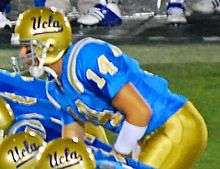 McLeod Bethel-Thompson is an American football quarterback who is a free agent. He played college football at Sacramento State.
McLeod Bethel-Thompson is an American football quarterback who is a free agent. He played college football at Sacramento State. Darwin Cerén is a Salvadoran footballer who plays for the Major League Soccer club San Jose Earthquakes and is captain of the El Salvador national team
Darwin Cerén is a Salvadoran footballer who plays for the Major League Soccer club San Jose Earthquakes and is captain of the El Salvador national team- Arturo Álvarez (footballer, born 1985) is a Salvadoran American footballer who plays as a winger and forward for Major League Soccer club Chicago Fire
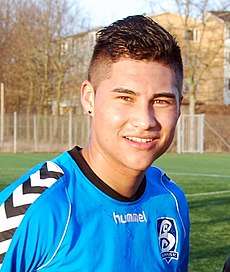 Dustin Corea is a Salvadoran international footballer who plays for FC Edmonton.
Dustin Corea is a Salvadoran international footballer who plays for FC Edmonton..jpg) Eriq Zavaleta is an American soccer player who plays as a center back for Toronto FC of Major League Soccer.
Eriq Zavaleta is an American soccer player who plays as a center back for Toronto FC of Major League Soccer.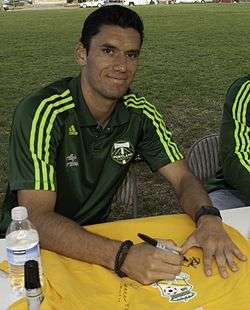 Steve Purdy is a Salvadoran American footballer who plays as a defender for Orange County Blues in the USL. He has played for the El Salvador national team at the CONCACAF Gold Cup in 2011 and 2013.
Steve Purdy is a Salvadoran American footballer who plays as a defender for Orange County Blues in the USL. He has played for the El Salvador national team at the CONCACAF Gold Cup in 2011 and 2013. Edwin Miranda grew up in Los Angeles, California and played four years of college soccer at Cal State-Northridge, where he was twice named Big West Conference Defender of the Year.
Edwin Miranda grew up in Los Angeles, California and played four years of college soccer at Cal State-Northridge, where he was twice named Big West Conference Defender of the Year.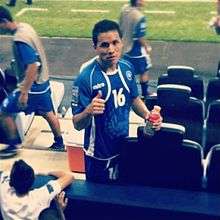 Richard Menjívar is a Salvadoran international footballer currently playing for the New York Cosmos of the North American Soccer League.
Richard Menjívar is a Salvadoran international footballer currently playing for the New York Cosmos of the North American Soccer League.
Activists
Entertainment
 Somaya Reece is a Salvadoran American hip hop and reality TV star
Somaya Reece is a Salvadoran American hip hop and reality TV star- Christy Turlington is an American supermodel. Her mother is from El Salvador. She first represented Calvin Klein's Eternity campaign in 1989 and again in 2014 and also represents Maybelline.
 Carla Vila is a Salvadoran American actress
Carla Vila is a Salvadoran American actress Sabi (singer) is a Salvadoran-American pop singer, songwriter, dancer and actress from Los Angeles, California. She was formerly part of the hip hop girl group, The Bangz. She is currently signed to Warner Bros. Records.
Sabi (singer) is a Salvadoran-American pop singer, songwriter, dancer and actress from Los Angeles, California. She was formerly part of the hip hop girl group, The Bangz. She is currently signed to Warner Bros. Records.
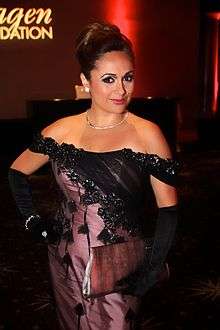 Elizabeth Espinosa reporter and journalist
Elizabeth Espinosa reporter and journalist Fernando del Valle is an American operatic tenor.
Fernando del Valle is an American operatic tenor.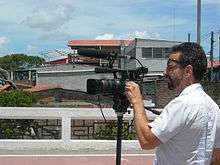 Marcos Villatoro is a writer from the United States. He is the author of six novels, two collections of poetry and a memoir, and the producer/director of the documentary “Tamale Road: A Memoir from El Salvador.”
Marcos Villatoro is a writer from the United States. He is the author of six novels, two collections of poetry and a memoir, and the producer/director of the documentary “Tamale Road: A Memoir from El Salvador.”
Military
 Francisco Rubio (astronaut) is a NASA astronaut candidate of the class of 2017 and a Battalion surgeon.He served as a UH-60 Blackhawk helicopter pilot and was deployed to Bosnia, Afghanistan, and Iraq
Francisco Rubio (astronaut) is a NASA astronaut candidate of the class of 2017 and a Battalion surgeon.He served as a UH-60 Blackhawk helicopter pilot and was deployed to Bosnia, Afghanistan, and Iraq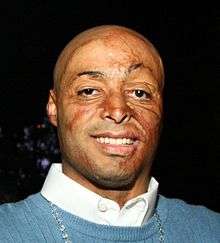 J. R. Martinez is an American actor, motivational speaker and former U.S. Army soldier. Starting in 2008, he played the role of Brot Monroe on the ABC daytime drama All My Children. He is the winner of Season 13 of ABC's Dancing with the Stars. Martinez served as the Grand Marshal of the 2012 Rose Parade. He is currently costarring on the syndicated action series SAF3.
J. R. Martinez is an American actor, motivational speaker and former U.S. Army soldier. Starting in 2008, he played the role of Brot Monroe on the ABC daytime drama All My Children. He is the winner of Season 13 of ABC's Dancing with the Stars. Martinez served as the Grand Marshal of the 2012 Rose Parade. He is currently costarring on the syndicated action series SAF3.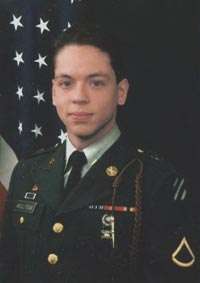 Markos Moulitsas is a Salvadoran American that served in the U.S. Army from 1989 through 1992. He is the founder and publisher of Daily Kos, a blog focusing on liberal and Democratic Party politics in the United States. He co-founded SB Nation, a collection of sports blogs, which is now a part of Vox Media
Markos Moulitsas is a Salvadoran American that served in the U.S. Army from 1989 through 1992. He is the founder and publisher of Daily Kos, a blog focusing on liberal and Democratic Party politics in the United States. He co-founded SB Nation, a collection of sports blogs, which is now a part of Vox Media
Historic figures
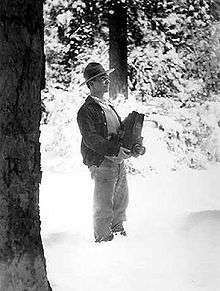 George Melendez Wright was an American biologist who conducted the first scientific survey of fauna for the National Park Service
George Melendez Wright was an American biologist who conducted the first scientific survey of fauna for the National Park Service Consuelo de Saint Exupéry, officially Consuelo Suncín, comtesse de Saint Exupéry was a writer and artist, and the wife of the French aristocrat, writer and pioneering aviator Antoine de Saint-Exupéry.
Consuelo de Saint Exupéry, officially Consuelo Suncín, comtesse de Saint Exupéry was a writer and artist, and the wife of the French aristocrat, writer and pioneering aviator Antoine de Saint-Exupéry.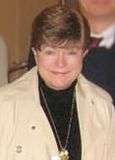 Alicia Nash was the wife of mathematician John Forbes Nash Jr. Alicia was accepted into Massachusetts Institute of Technology, from where she graduated in 1955 with a degree in physics. She was one of 16 women among approximately 800 men in M.I.T.'s Class of 1955.
Alicia Nash was the wife of mathematician John Forbes Nash Jr. Alicia was accepted into Massachusetts Institute of Technology, from where she graduated in 1955 with a degree in physics. She was one of 16 women among approximately 800 men in M.I.T.'s Class of 1955.
See also
- Salvadoran Australians
- History of the Central Americans in Houston
References
- "B03001 HISPANIC OR LATINO ORIGIN BY SPECIFIC ORIGIN - United States - 2018 American Community Survey 1-Year Estimates". U.S. Census Bureau. July 1, 2018. Retrieved December 24, 2019.
- US Census Bureau 2011 American Community Survey B03001 1-Year Estimates HISPANIC OR LATINO ORIGIN BY SPECIFIC ORIGIN Factfinder.census.gov, retrieved October 28, 2012
- "Facts for Features: Hispanic Heritage Month 2017". US Census Bureau.
- "Top 101 cities with the most residents born in El Salvador (population 500+)". City-data.com. Retrieved 28 October 2018.
- Wiltberger, Joseph (2013). "Suenos Salvadorenos: Struggles to build other futures in El Salvador's migration landscape": 62. Cite journal requires
|journal=(help) - Roca, Francisco (2013). The relationship between Salvadorian immigrant students and their teachers. ProQuest, UMI Dissertations Publishing. p. 10.
- Jones, Richard C. (1989). "Causes of Salvadoran Migration to the United States". Geographical Review. 79 (2): 183–194. doi:10.2307/215525. JSTOR 215525uj.
- Bachelis, Faren (1990). The Central Americans. New York: Chelsea House. p. 10.
- Stanley, William (1987). "Economic Migrants or Refugees from Violence? A Time-Series Analysis of Salvadoran Migration to the United States". Latin American Research Review. 22: 147.
- Barker, Karlyn (18 February 1989). "New Wave of Salvadoran Immigrants Revives Call for Refugee Status". The Washington Post.
- "Wealthy Salvadorans wait out violence at home in Miami". Retrieved 21 December 2014.
- Farah, Douglas (28 December 1989). "Salvadorans Lining Up To Get Out; Guerrilla Offensive Triggers an Exodus". The Washington Post.
- Dooling, Shannon. "Fleeing Salvadoran Gangs, A Months-Long Journey To Boston". WBUR. Retrieved 23 December 2014.
- "Immigrants" (PDF). Homeland Security. Retrieved 23 December 2014.
- Sorenson, Travis. Voseo To Tuteo Accommodation Among Two Salvadoran Communities in the United States. Proquest. ProQuest, UMI Dissertations Publishing.
- Simons, Marlise (1986-01-20). "El Salvador is fertile ground for protestant sects". The New York Times. Retrieved 22 December 2014.
- Norton, Chris (1987-03-04). "Protestant sects find fertile soil in troubled Central America". The Christian Science Monitor. Retrieved 22 December 2014.
- Alpert, Jessica. "El Salvador". Jewish Virtual Library. Retrieved 22 December 2014.
- Jordan, Richard. "Celebrating Hispanic Heritage Month on News4". NBC Washington. Retrieved 22 December 2014.
- "Richmond Metro Area Population and Races". Usa.com. Retrieved 27 May 2018.
- Pan, Phillip (6 December 1999). "At Home in Chirilagua, Va.; Salvadoran Leaves Old Village, Finds New One in U.S.". The Washington Post. WP Company LLC.
- Bahrampour, Tara (8 March 2007). "On Film, What They Left Behind; Documentary Tells of an Exodus From a Salvadoran Town and the Ties That Abide". The Washington Post. WP Company LLC.
- Castaneda, Ruben (10 February 1991). "Feud Between Salvadoran Groups Erupts in Killings; Rivalry Between District, Arlandria Teenagers Flares Over Styles, Toughness, Status". The Washington Post. WP Company LLC.
- Jean, Aymar (13 June 2005). "Arlandria Celebrates Community, Culture". The Washington Post. Retrieved 21 December 2014.
- Krogstad, Jens. "From Germany to Mexico: How America's source of immigrants has changed over a century". PewResearchCenter. Retrieved 21 December 2014.
- Graziadei, Jason. "From Agua Caliente to Nantucket: Island home to thriving Salvadoran community". Ack.net. Retrieved 27 May 2018.
- Dooling, Shannon. "One Small Community To Another: Salvadorans Find Safety On Nantucket". WBUR. Retrieved 21 December 2014.
- Copquin, Claudia. "Salvadoran consulate offers business help". Newsday. Retrieved 21 December 2014.
- Ramos, Victor. "LI's pool of political power players becoming ethnically diverse". Newsday. Retrieved 21 December 2014.
- U.S. Census Bureau, 2014 American Community Survey 1-Year Estimates Archived 2020-02-14 at Archive.today retrieved June 15, 2016 – select state from drop-down menu
- Bureau, U.S. Census. "American FactFinder – Results". factfinder2.census.gov. Archived from the original on 2020-02-12.
- "Top 101 cities with the most residents born in El Salvador (population 500+)". city-data.com. Retrieved 2008-08-01.
- "The Hispanic Population: 2010 Census Brief" (PDF). Retrieved November 16, 2012.
- "The American Community— Hispanics: 2004" (PDF). Retrieved 22 December 2014.
- Ferdman, Roberto. "The great American Hispanic wealth gap". The Washington Post. Retrieved 22 December 2014.
- Constable, Pamela. "DC area Salvadorans, once stuck in menial jobs, now becoming business owners". The Washington Post. Retrieved 22 December 2014.
- "About Us". Salvadoran-American Chamber of Commerce of the Washington, D.C. Metropolitan Area. Retrieved 22 December 2014.
- ""Little Salvador" blooms in L.A." Orange County Register. Retrieved 23 December 2014.
- "About Us". El Salvador Community Corridor. Retrieved 22 December 2014.
- Constable, Pamela (30 October 1994). "We Will Stay Together". Washington Post Magazine.
- Cavaja, Doreen (13 December 1994). "Making Ends Meet in a Nether World". The New York Times.
- Bermudez, Esmeralda. "Young Salvadoran Americans embrace their roots". Los Angeles Times. Retrieved 22 December 2014.
- Coutin, Susan (Winter 1998). "From Refugees to Immigrants: The Legalization Strategies of Salvadoran Immigrants and Activists". International Migration Review. 32 (4): 919. doi:10.2307/2547665. JSTOR 2547665.
- Carr, Elson (9 May 1993). "A New Direction". Los Angeles Times.
- Shyong, Frank. "L.A. Salvadoran community sees hope along a new corridor". Los Angeles Times. Retrieved 22 December 2014.
- Barned-Smith, St John (5 August 2013). "Free health services draw many to Salvadoran festival". The Washington Post. WP Company LLC.
- Lee, Stephanie (9 August 2010). "At celebration, immigration issues on minds; Salvadoran festival in Va. comes as slew of laws is introduced". The Washington Post.
- Carman, Tim. "Pupusas, through thick and thin". The Washington Post. Retrieved 23 December 2014.
- Molina, Carmen. "Asamblea de Nueva York declara 6 de agosto Día del Salvadoreño-Americano". elsalvador.com. Retrieved 22 December 2014.
- "Día del salvadoreño-americano en Maryland". holacuidad. Retrieved 22 December 2014.
- "Gobernador de Maryland proclama Día del Salvadoreño Americano". El Imparical. Retrieved 22 December 2014.
- http://www.latimes.com/politics/la-pol-ca-assembly-district-51-special-election-20171206-story.html
- "About Wendy – Wendy Carrillo for Assembly". Wendy Carrillo for Assembly. Retrieved 2018-09-25.
- Sullivan, Patricia (2 January 2013). "Arlington starts year with focus on housing". The Washington Post.
- Ramos, Victor. "LI's pool of political power players becoming ethnically diverse". Newsday. Retrieved 23 December 2014.
- "Suffolk County Legislator Monica Martinez". Suffolk County Legislature. Retrieved 23 December 2014.
- "Councilman Antonio A. Martinez". Town of Babylon. Retrieved 23 December 2014.
- Tobar, Hector (1 September 1992). "No Strength in Numbers for LA's Divided Latinos". Los Angeles Times.
- Corwin, miles (16 November 1992). "Understanding the Riots". Los Angeles Times.
- Wilkinson, Tracy (12 January 1992). "New Questions Arise for Salvadoran in Los Angeles". Los Angeles Times.
- Leff, Lisa (20 March 1994). "At Peace but Uneasy, Salvadorans Vote Today". The Washington Post.
- George Miller. "El Salvador: Policy of Deceit", The New York Times, October 21, 1988.
- "戦う女性の賢い生き方指南書". 戦う女性の賢い生き方指南書. Archived from the original on 2011-06-03.
- "Ed Weeks is Salvadorean on his mother's side!", latina.com. Retrieved 24 August 2014.
- "In Bed With Joan – Episode 9: Ed Weeks". Retrieved 24 August 2014.
Further reading
- Cordova, Carlos B. The Salvadoran Americans (Greenwood Press, 2005).
- Coutin, Susan Bibler.“Remembering the Nation: Gaps and Reckoning within Biographical Accounts of Salvadoran Emigrés.” Anthropological Quarterly 84.4 (2011): 809–834.
- Kowalski, Kathiann M. Salvadorans in America (Lerner Publications, 2006).
- Mahler, Sarah J. Salvadorans in Suburbia: Symbiosis and Conflict (Allyn and Bacon, 1995).
- "Salvadoran Americans." Gale Encyclopedia of Multicultural America, edited by Thomas Riggs, (3rd ed., vol. 4, Gale, 2014), pp. 47-58. online
